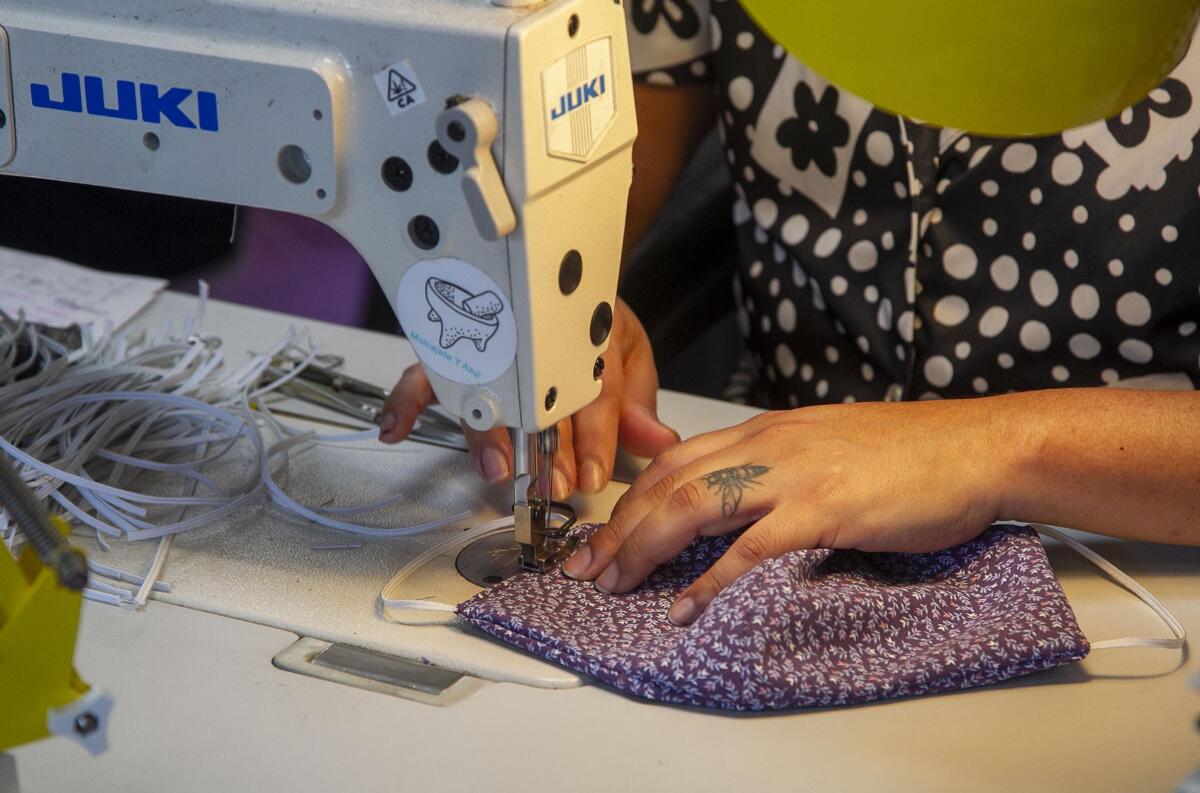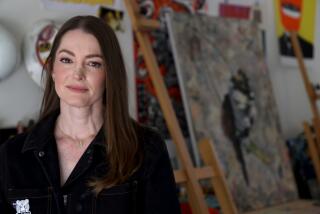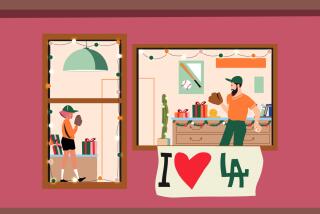Many artists made serious profits during the pandemic. Here’s how

- Share via
Sergio Aragon and Jesus Gutierrez started selling T-shirts and hoodies at Gay Pride events in 2019. It was a nice little side hustle until the pandemic shut everything down. They thought they were sunk.
GayPrideApparel, which racked up about $6,000 in sales in 2019, is now a $600,000-in-sales enterprise. Unexpectedly, Aragon and Gutierrez were able to pave a far more profitable path with lessons they learned: Opportunities lie in every market, no matter how dire the circumstances. You just have to look for them — and they may not be in the places that you’d expect.
While creative passions may feed the soul, they were historically poor profit makers. The term “starving artist” became cliche because it was so often true. The pandemic has upended that stereotype for many types of creatives, such as artists, designers and cooks.
The reasons are as varied as the enterprises that popped up and profited: A vast and sudden need for unfamiliar products, such as face masks. An abundance of free time due to unemployment. A need for diversions. And, perhaps, artistic endeavors resonated with consumers for the same reason that they speak to artists — they provide balm for troubled souls.
Whatever the reason, many people who pulled out such things as sewing machines and cookie cutters in an effort to make money over the last year were met with unexpected success. Hundreds of budding entrepreneurs started selling homemade face masks on Etsy, for example. Others found a market for artisan foods, including fancy cookies and charcuterie boards. Yarn sales took off. Custom aprons, puzzles and coloring books were all in high demand.
Of course, success is never automatic or assured. Here’s how some artists pivoted their work to meet the new demands and opportunities of pandemic life.
Reinvent old pastimes
Between Netflix and Zoom calls, the pandemic gave Sandra Blaschke, 28, an abundance of screen time. Seeking diversion without electronics, she turned to a childhood pastime — jigsaw puzzles. The problem? Most of the puzzles she found were pretty pedestrian. They were the same old landscapes and animal pictures that she’d put together as a child.
“My immediate thought was: ‘There are so many talented artists out there, why aren’t their artworks being used to create beautiful puzzles?’” Blaschke started reaching out to female artists with the pitch of collaborating to provide artwork on puzzle boards, which she would mail out in sustainable muslin bags.
Prints in Pieces was born. Although the fledgling company is still small, it’s profitable. And it couldn’t have launched at a better time. Sales of jigsaw puzzles soared during the pandemic and are expected to remain strong through the next five years, market research shows.
Think community first
Stay-at-home orders were a challenge at first for GayPrideApparel primarily because the company based its marketing on sales at in-person events. But they turned out to be a blessing in disguise.
“COVID made us focus on selling through our social channels,” Gutierrez said. “We had no other choice.”
Aragon and Gutierrez started posting more frequently on Facebook and Instagram. Instead of directly pitching their products, their posts were largely personal comments on news and events that affected the LGBTQ community. Within a year, GayPrideApparel’s social media following quadrupled and its rainbow-themed clothing and accessories starting flying off the virtual shelves.
“It’s a community approach,” Gutierrez said. “We speak about things that we think our community would appreciate.”
Have a sense of humor
Something about twisting well-known names and phrases to poke fun at the pandemic tickled Carlos Ugalde’s fancy. That turned out to be a great idea.
House of Chingasos, his Latino-themed apparel company, started selling T-shirts with sayings such as “No Kids on the Block” and “Miley Virus.” His fledgling clothing company, launched only a year earlier, started raking in the cash.
Ugalde estimates House of Chingasos sold $2 million in merchandise during the last year.
“I started out making cat shirts,” he says. “The pandemic really helped us.”
Tap existing resources
One of the reasons these creatives were able to profit when the pandemic hit is they didn’t need to start from scratch and invest in inventory or e-commerce. Online platforms that provide everything from print-on-demand services to marketing have become ubiquitous in the last few years. They can be tapped at a moment’s notice.
For instance, House of Chingasos and GayPrideApparel use Printful, a print-on-demand operation, to fulfill their orders.
Printful handles the manufacturing, emblazons products with the artist’s designs and ships them out to customers, using the artist’s branded mailing labels. There’s no need to hold inventory or stress about manufacturing or administration. The artist’s only job is to create and market his or her designs.
When the creative products are handmade, such as foods or custom jewelry, online portals such as ChefsFeed and Etsy can handle marketing and collecting payment, rather than the production. That frees artists to do what they do best — create.
“If you want to start a business, you can buy your own machinery, carry inventory and hire people, or you can use a company that’s already doing that,” Ugalde said. “That allows me to focus on design and marketing and not worry about the inventory.”
Kristof is the editor of SideHusl.com, an independent site that reviews hundreds of money-making opportunities in the gig economy.
More to Read
Inside the business of entertainment
The Wide Shot brings you news, analysis and insights on everything from streaming wars to production — and what it all means for the future.
You may occasionally receive promotional content from the Los Angeles Times.










